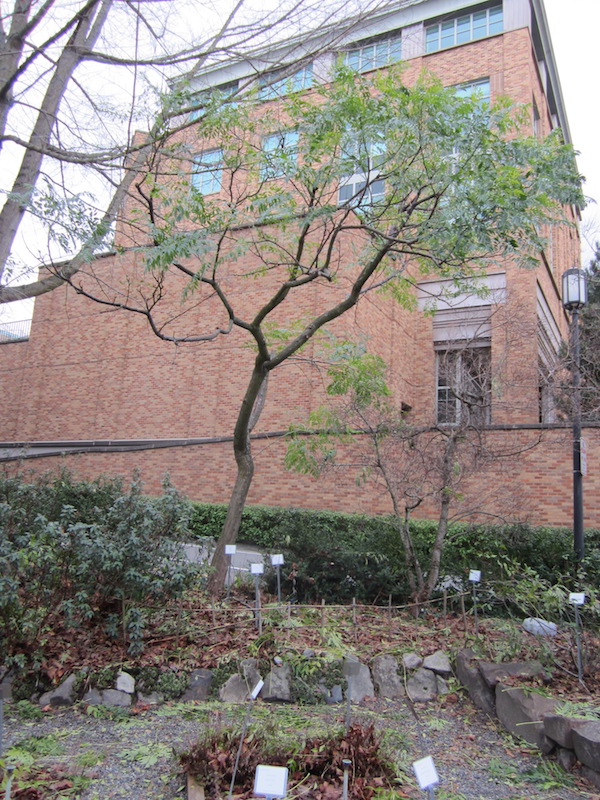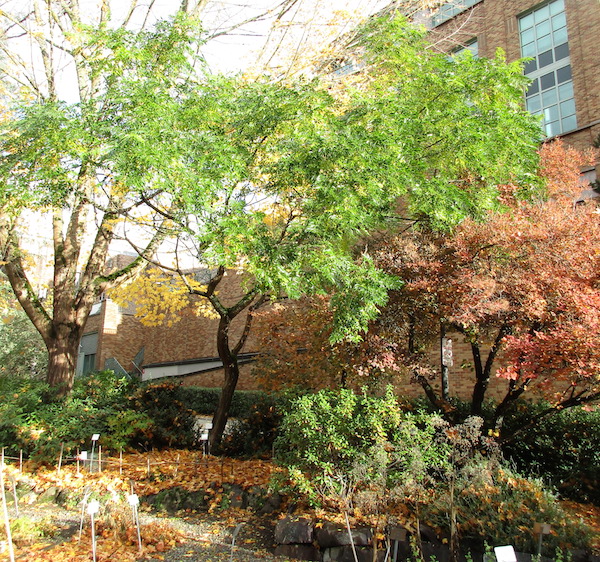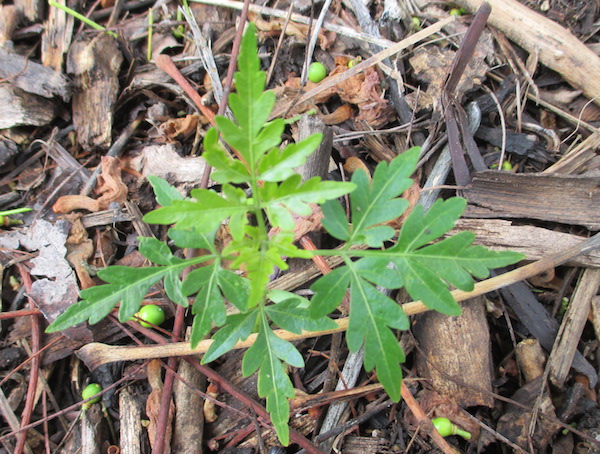Plant of the Month: November 2020
|
| Chinaberry |
| Melia Azedarach L. |
MELIACEÆ; Mahogany Family
|
| To my knowledge, the Chinaberry tree is extremely rare in Seattle. I happen to know more than a little about its presence here, thus this article. |
| When the first edition of my book Trees of Seattle was new (1990), no specimens in the city were known to me. By the book's second edition (2006), only two were. One of the two, planted about 1970, had been cut back heavily in 2004, and was apparently killed intentionally or otherwise. The second specimen was planted about 1997, and it is the tree in my photographs. |
| The species is native from N India to China through SE Asia to Australia. It has been in the USA since the 1780s, is much grown in southern areas and California, and has gone wild weedily. Other names for it include China Tree, Pride of India, Bead Tree, Persian Lilac, Syrian Bead-tree, Syringa, and White Cedar. A dense, broad variant is Texas Umbrella-Tree. |
| The tree is visually delicious. Its beautiful green foliage is elegantly composed of many small glossy leaflets, that remain green into late November or early December. In May or June, sweetly fragrant lilac-colored (pink rarely) flowers bloom, giving rise to toxic, persistent, yellow-green, small-marble-sized berries. In Seattle, I have looked for but never seen seedlings. The one pictured below is in California. |
| In 1987, a friend from Seattle was with me walking in a California arboretum. We came upon a Chinaberry tree full of fruit. Despite being warned of its toxicity, my friend ate one, and vomited as a result. In 1871, Frederick Porter Smith published a Chinese account reporting: "The phœnix and the unicorn are said to eat the fruits of this tree, but the dragon abhors them." |
| There is more speaking of friends, now. It was a friend of mine, Professor Art Kruckeberg (d. 2016), who had obtained in Korea the seed from which the Seattle Chinaberry tree grew. It was originally at the UW Botany Greenhouse. Then once it grew too big, Gary Lockhart and I planted it in the UW Medicinal Herb Garden. After Gary died in 2001, his ashes were scattered around the tree he helped plant. |
| The tree is handsome, fragrant, tolerant of heat, dryness, and ordinary freezing winters. It grows rapidly. It has medicinal value, and an insecticidal role. Its hard seeds are used as beads, such as in rosaries. At least in Seattle, it is not proving weedy. In some climates, however, the tree is a problem. Roland Hoyt wrote of it: "a grand source of litter and seedlings, inappropriate in any place of pretension to cleanliness or finish." |
This bitter, toxic tree gets confused nominally more than a little with with the related, edible Neem Tree, long called Melia Azadirachta, but correctly: Azadirachta indica. But it is tropical and not cold-hardy in Seattle.
Back |

Melia Azedarach in Seattle in 2012; photo by ALJ
|

Melia Azedarach in Seattle in 2020; photo by ALJ
|

Melia Azedarach seedling; photo by ALJ
|
|
|

